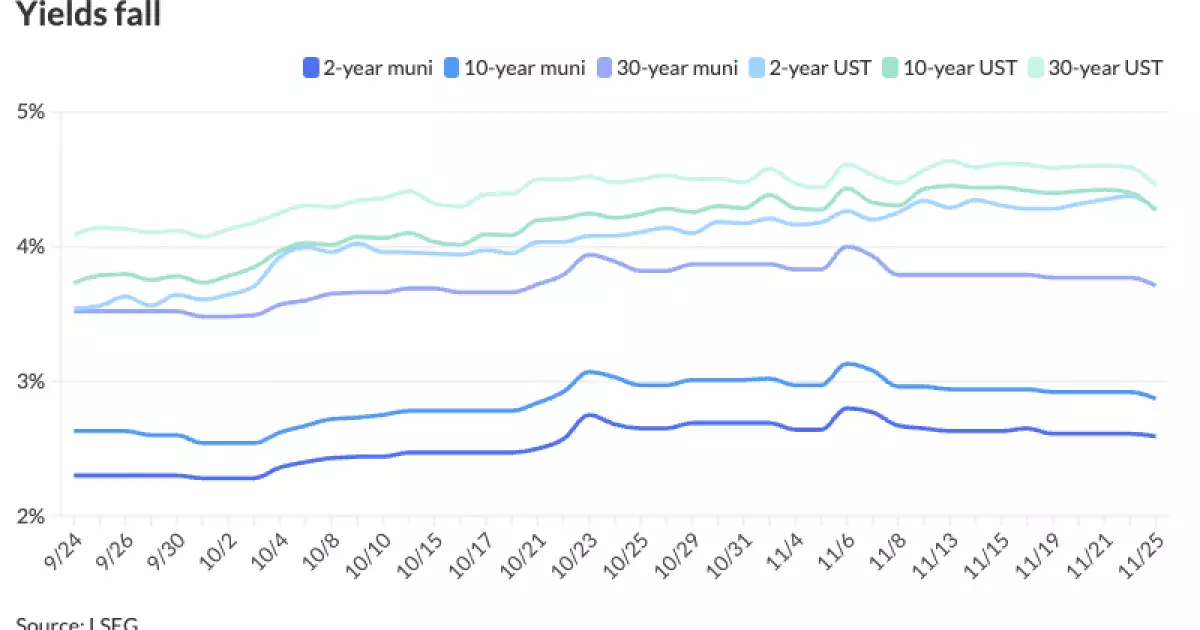Recent developments in municipal bonds have attracted attention, particularly following significant market movements tied to broader economic and political factors. As the U.S. Treasury experienced a notable rally, the yields on municipal bonds, commonly referred to as “munis,” saw a comparable decline. This shift reflects a general investor sentiment that has emerged in light of the political climate, specifically regarding the recent nomination of hedge fund founder Scott Bessent as U.S. Treasury Secretary by President-elect Donald Trump. The implications of such political appointments could signify stability, influencing various sectors, including the municipal market.
Evaluating the effects of this political landscape, one finds that certain market participants view Bessent’s selection positively, reinforcing confidence in fiscal responsibility within Trump’s cabinet. A report by UBS highlighted that market responses suggest a balanced outlook on potential Trump administration policies, emphasizing that inflation and interest rate risks might be moderated more effectively than initially perceived. This includes the anticipation of a possible decline in U.S. Treasury yields by 2025, easing some concerns that had plagued investors.
In significant contrast to previous months, the municipal market demonstrated a remarkable turnaround in November. After witnessing a drop of 1.46% in October, current projections indicate an upside of 0.88% as the month progresses, leading to an improved year-to-date return of 1.69%. Notably, high-yield municipal bonds also showcased impressive gains, returning 6.96% year-to-date. The resurgence in the market can be largely attributed to strong demand for tax-exempt income, which has bolstered the appeal of munis compared to their taxable counterparts, which showed an underwhelming performance.
Daryl Clements, a portfolio manager at AllianceBernstein, pointed out that this demand reflects a tightening of after-tax spreads, crucial for those seeking tax benefits from municipal investments. Furthermore, recent data reveals that retail investors have steadily contributed to the market, absorbing new issuances and enhancing the overall health and attractiveness of munis.
One compelling aspect of the municipal bond landscape is the growing disparity in valuations between munis and Treasuries. Recent statistics indicate that munis are becoming increasingly expensive in comparison, particularly noted in the long-end of the market where the 30-year municipal to U.S. Treasury ratio reached its highest level since early 2022. This suggests that investors may find themselves paying a premium for municipal securities, echoing a broader trend of heightened interest amidst favorable tax treatments.
Current ratios showcase a rise, with the two-year municipal to U.S. Treasury ratio sitting at 61% and climbing consistently across various maturities. Such data points to a significant shift, where more investors seek the relative safety and tax advantages associated with municipal bonds, especially in an environment fraught with uncertainty regarding federal fiscal policy.
As the year winds down, the municipal market is expected to face a decrease in new supply, potentially impacting pricing and yield trends. Only $1.4 billion is anticipated to come to market in the short term, a reflection of typical year-end patterns. However, analysts remain optimistic regarding a rebound in issuance early next year, with a lineup of larger deals already on the calendar.
Significant upcoming issuances include $843 million in airport facilities revenue bonds from the Greater Orlando Aviation Authority and another $750 million in taxable general obligation bonds from Hawaii. These offerings present opportunities for discerning investors to strategically position themselves within the municipal market as demand remains robust, suggesting a nuanced and dynamic path forward.
In summation, the ongoing fluctuations and emerging trends in the municipal bond market showcase a compelling investment landscape, rich with potential for returns, particularly in light of favorable political conditions and ongoing demand for tax-free income. Investment strategies should focus on long-term gains while remaining vigilant of the shifting economic dynamics influenced by federal policies and market conditions. With nuanced understanding and strategic positioning, investors can navigate the complexities of municipal bonds, ensuring participation in a market that continues to evolve.


Leave a Reply